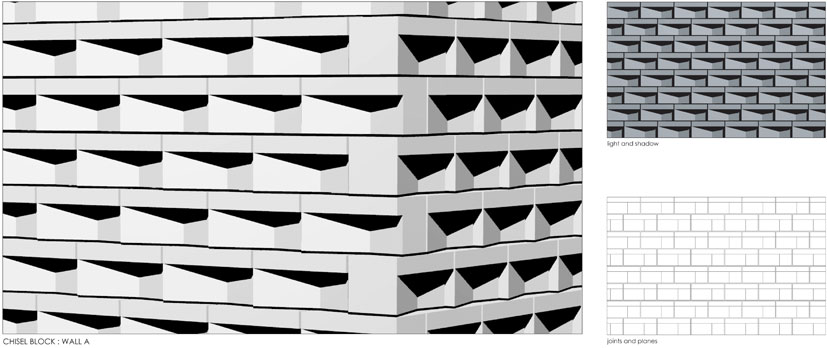"Because a concrete masonry unit is 80 percent air by volume and is composed of 90% plentiful inert material, it has naturally low-embodied energy. It is already an ecologically sound building component." Brochure for Pixel Blocks, a new decorative concrete masonry unit.
 First, the math doesn't make sense. Unless the air is included as part of the inert material, the total of the air and the "inert material" would be 170 percent.
First, the math doesn't make sense. Unless the air is included as part of the inert material, the total of the air and the "inert material" would be 170 percent.
More, in California, where the brochure was distributed, CMU is usually filled with mortar, so the product as used has only a small air content within the concrete's voids.
Next, I can't imagine what part of a CMU is not inert. I have watched cured concrete, and it usually just stays in one place and is not very chemically reactive. Are they referring to calcium hydroxide that can form akaline deposits on the surface of concrete?
Finally, the brochure does not address the real ecological footprint of the product -- both detriments like the high CO2 emissions associated with portland cement, and positive features like the durability of the product.
 First, the math doesn't make sense. Unless the air is included as part of the inert material, the total of the air and the "inert material" would be 170 percent.
First, the math doesn't make sense. Unless the air is included as part of the inert material, the total of the air and the "inert material" would be 170 percent.
More, in California, where the brochure was distributed, CMU is usually filled with mortar, so the product as used has only a small air content within the concrete's voids.
Next, I can't imagine what part of a CMU is not inert. I have watched cured concrete, and it usually just stays in one place and is not very chemically reactive. Are they referring to calcium hydroxide that can form akaline deposits on the surface of concrete?
Finally, the brochure does not address the real ecological footprint of the product -- both detriments like the high CO2 emissions associated with portland cement, and positive features like the durability of the product.
